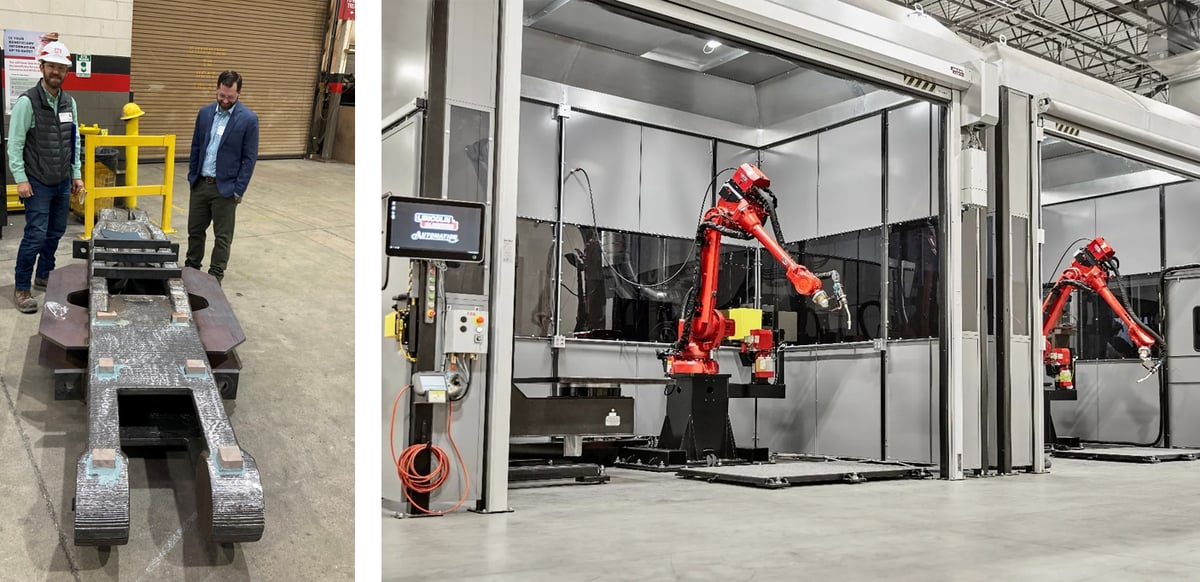Army Engineers Harness Metal 3D Printing to Reshape America’s Aging Infrastructure
View SourceOne 12-foot piece of 3D printed steel saved the US Army Corps of Engineers more than a year of lead time and prevented a six-month waterway closure that would have temporarily reduced the US gross domestic product by $1.1 trillion, resulting in the loss of 11 million jobs.
This is according to a US Department of Homeland Security study detailing the critical importance of the Soo Locks, located in Sault Ste. Marie, Michigan. The locks, first constructed in 1855 and overhauled in 1969, enable ships to traverse the 21-foot difference in water levels between Lake Superior and the lower Great Lakes, and are essential for maritime transportation especially shipping iron ore, coal, grain, and other commodities across the US.
The locks, which are operated by the U.S. Army Corps of Engineers (USACE), are among the busiest locks in the world by tonnage of cargo handled.

In early March, the Army Engineers installed the largest component yet produced by a 3D printer into American civil works infrastructure. The 12-foot-long metal part for the ship arrestor system on the Poe Lock, one of the two active locks on the Soo Locks facility.
The arrester arms, also known as arrestor gates, are vital safety features that prevent vessels from accidentally striking the lock walls.
“The system is designed to safely and quickly halt a 100,000-ton vessel loaded with commodities over the course of 72 feet,” says Detroit District Structural Engineer Clint Dougherty.

In February 2023, cracks were found in one of the 60-year-old arms. While temporary repairs were made at the time, work began to find a permanent replacement.
After considering various design alternatives, engineers ultimately selected additive manufacturing, specifically wire arc additive manufacturing (WAAM), as the best option. The 3D printing contract went to Lincoln Electric.
“Lincoln Electric and USACE developed an additive print strategy to print the part in two pieces, one approximately 4,000 pounds and the other 2,000 pounds, made from high-strength, low-alloy steel, then weld them together at their Baker Industries facility located in metro Detroit,” Dougherty says.
The US Army and Department of Defense have extensively studied how additive manufacturing could be used in military projects and are now applying the lessons learned to modernize American infrastructure.

US Army Corps of Engineers’ Clint Dougherty (left) and Dr. Zackery McClelland (right) with the 3D printed lock component. The wire arc additive manufacturing robotic arm printers at Lincoln Electric.
An important focus was to ensure additive manufacturing could meet USACE requirements for reliability, utility, and cost efficiency, particularly given the intense stressors placed on civil infrastructure. Extensive research was conducted to characterize material properties of existing vintage parts and to ensure the 3D-printed material could meet or exceed their performance.
“We have been trying to advance the scale and reduce the cost using new approaches for manufacturing,” says Robert Moser, senior scientific technical manager for materials, manufacturing, and structures at the US Army Engineer Research and Development Center (ERDC). “A lot of our research has gone into investigating the best parameters to produce some of the metals we want and to ensure we minimize any defects that would affect strength or fatigue. We have to validate the mechanical performance of those parts and ensure they are as good as or better than the parts we already have. In this case, it was at least 20% or 30% stronger than the metals that were previously being used.”
The ERDC effort will also create a digital parts inventory that will accelerate the turnaround time for replacement components tenfold and eliminate the need to physically store large parts and molds for future use, according to the USACE.
Subsequent research will study the production of stainless steel materials, as well as the ability to incorporate multiple metals – a capability that doesn’t exist with traditional manufacturing, but one that could allow for greater efficiency, such as only placing a fatigue-resistant material where it is needed rather than using it as the sole metal throughout the entire project.
ERDC and its partners are also studying how parts can be better designed using contemporary understanding of structural loads. In the past, parts were often overdesigned based on conservative assumptions, says the USACE, but today’s increased knowledge, combined with emerging material research, enables improved performance with lighter weight, with parts precisely scoped to meet actual needs.
Building on the success of the Poe Lock arrestor arm project, these research efforts will further advance the Army Engineer’s large-format additive manufacturing capability. Ultimately, this will reduce the turnaround time to procure components from months to days for a wide range of infrastructure projects.
The part was manufactured in 12 weeks, compared to a projected 18-month lead time for conventional manufacturing. The part was installed, tested and commissioned during the Soo Locks’ winter maintenance cycle; a ten-week maintenance closure period set by Federal regulation ending in early March 2024.
The Soo Locks reopened for the navigation season on March 22, after OCCI successfully commissioned the new lever arm.

